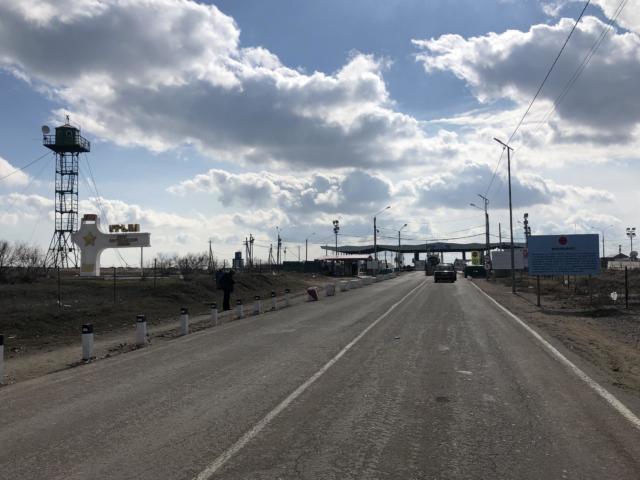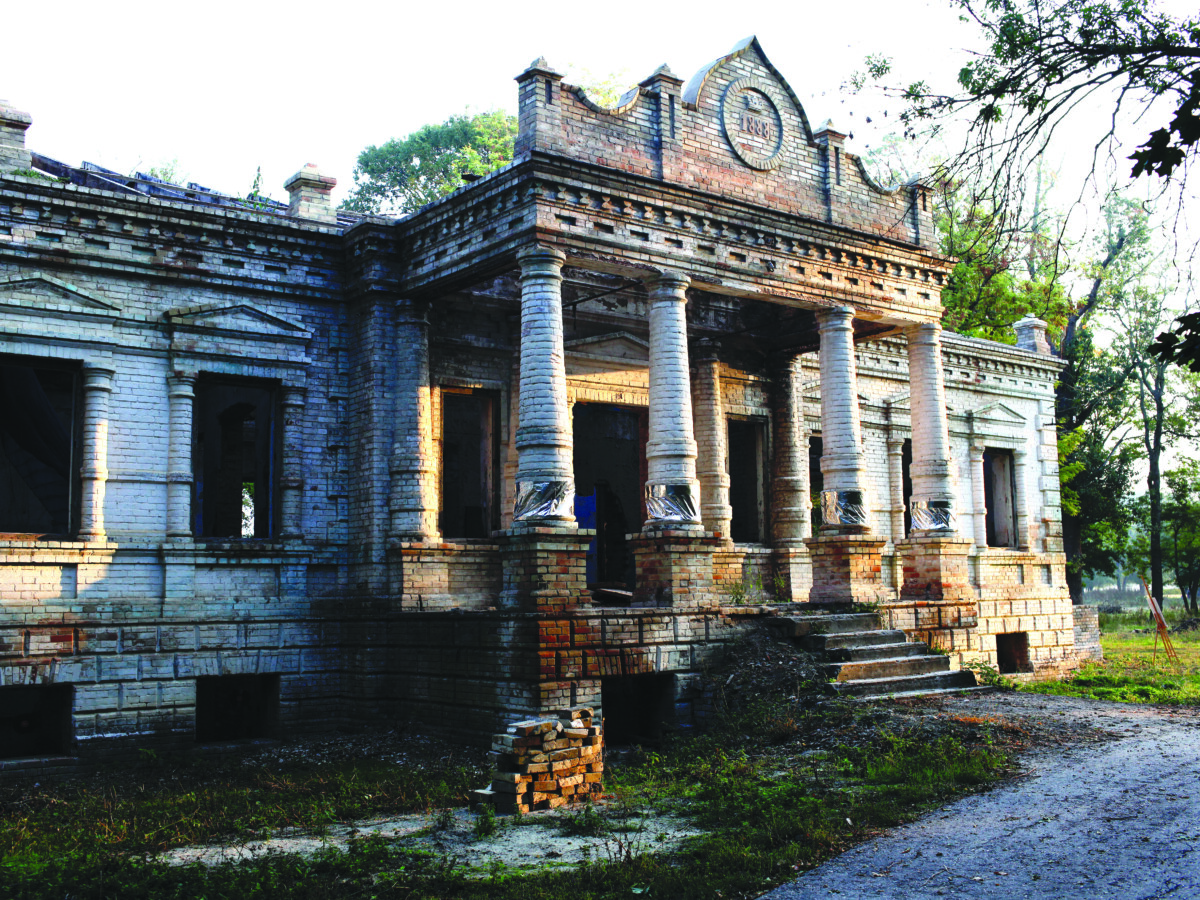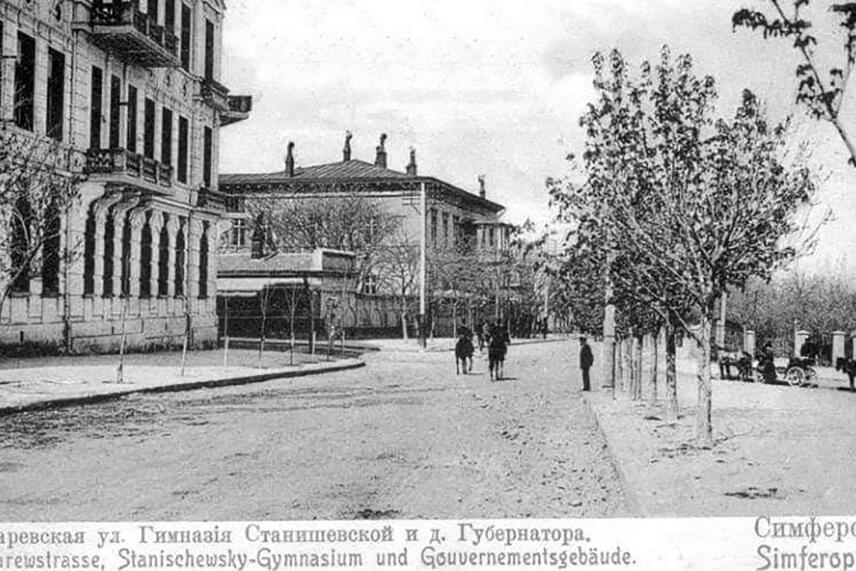For six years, a number of Ukrainian and Western media, along with certain politicians, bloggers and so-called social activists of all hues, have been practicing warfare with Crimea in the sphere of information. And they fight with self-forgetful inspiration, demonstrating jealously to each other who have faked up more and whose bogeyman stories about Crimea are funnier. Well, it is quite understandable, somehow you have to make your living … It is worth mentioning that some of them are talented indeed, at least in fantasy style. Some conjure up pictures of the Crimean Bridge collapsed because of a ‘mud volcano’, others fancy nuclear warheads… Oh, they certainly miss those times when being particularly creative wasn’t so important, and confining themselves to mentioning ‘deserted beaches’, ‘empty counters’ and ‘tanks in the streets’ was surely enough. Even the most devoted fans of this genre no longer give credence to such a newspaper hoax. Reality places a challenge before the anti-Russian ideological machine to strain itself and feign something fresher. The Crimean Journal decided to make a selection of the latest information phantoms about Crimea, appearing in the media.
“Nuclear Peninsula”
The topic of the alleged nuclear arms capability in Crimea has certainly been around for ages among the anti-Russian myth-makers. However, making it more mainstream has been encouraged relatively recently. Representatives of a neighboring state display particular zeal. Moreover, judging by the discrepancy in the statements on this topic, the attitude of the Ukrainian military and political figures is not at all consistent and clear.
At the beginning of 2019, the ex-commander of the naval forces of Ukraine Vitaliy Gaiduk said that Russia “expands tactical nuclear weapons in Crimea and increases the number of cruise missiles on the ships of the Black Sea Fleet”. The goal of the Russian Federation, according to Gaiduk, is “the promotion of their national interests using pressure tactics”.
In his turn, the Ukrainian MP Mustafa Dzhemilev (the former head of the Medzhlis organization outlawed in Russia) in the autumn of 2018 spoke, referring to some “source from Moscow”, of at least six nuclear warheads located on the peninsula.
Pavel Klimkin, who at that time occupied the post of the Minister for Foreign Affairs, decided not to be so categorical and stated the following: Kyiv “has well-founded suspicions” that “there may be nuclear weapons in Crimea or at least the infrastructure for their deployment”. After all, he is a diplomat…
At the same time, judging by the statement of the former so-called representative of the President of Ukraine in the Autonomous Republic of Crimea, Boris Babin, made in January 2019, there have been no nuclear weapons on the peninsula so far. But they will appear soon, he claims. Babin is firmly convinced that Russia is awaiting the completion of the construction of the railway part of the Crimean Bridge to transfer nuclear forces to the peninsula.
It seems that our neighbors have not yet decided whether there are nuclear weapons in Crimea or not. Almost like in a meme about a gopher from the movie ‘Demobbed’: “Do you see nuclear warheads? I don’t see them either. But there they are”.
Some Western-European statesmen also try to keep pace with their Ukrainian counterparts. The article written by the European Commissioner for Security, Julian King, proved to be a striking example. The material published in the British edition of The Guardian in December, 2018 contained the same “nuclear” legend.
Not only have all these “denunciators” failed to adduce any intelligible proof of such “intimidating” assertions, but their statements also run counter to logic and common sense. Those who have at least a little notion about military history and strategy know that the states with available nuclear weapons will never deploy them on the borders of their territories. At that rate, there is a great risk of annihilation of these funds in case of the conflict. Therefore, nuclear weapons are located upcountry, so that they are more difficult for the potential adversaries to reach. By definition, there is no sense in deploying such weapons in Crimea, since even without them the current concentration of armed forces on the peninsula leaves no chance for a potential enemy and fortifies the southwestern borders of Russia.
“Nostalgic about Ukraine”
If the average citizen unaware of current affairs in Crimea will watch for some time only Ukrainian TV channels and read only the Ukrainian media, he will come to believing that Crimean citizens have “endured so many sufferings from the Russian occupancy” in six years and are keen on reverting to the “independent” state.
The most frequently adduced argument is the “cruelty of the ruling regime”. The unwanted can supposedly be grabbed any time in the street and put behind bars. Suspects or those who have committed real criminal offenses are presented as vivid examples. But for some reason or another in Ukraine and the West, they are persistently referred to as “political prisoners”…
The debates of the supporters of “nostalgic about Ukrainian times” theory quite often reduce to the need for “bread and circuses”. Fake-makers say that Crimeans are eager to return to Ukraine because of “high prices, difficulties in obtaining Schengen visas, weariness of “Ukrainophobic propaganda”, yelling for “honest and impartial” Ukrainian TV and Ukrainian salo…”
Anyway, we are not going to be linked to them. Prices in Crimea are quite high indeed, there are certain problems in the sphere of medicine as well as housing and communal services, incomes are not as good as one would like it to be. This is an objective reality. But to speak about it as if it is the reason why a considerable part of Crimeans wants to go back to Ukraine means openly misinforming and manipulating the public. Well, seriously, it’s not about salo! But the invisible front fighters of the opposing side cannot understand this.
Here are the numbers. So, according to the results of the poll conducted by the All-Russian Center for the Study of Public Opinion in March 2019, 89% of the residents of the Republic of Crimea would again vote for joining Russia, and only 3% for maintaining the autonomy within Ukraine. More than 70% of respondents stated that the reunion of the peninsula with Russia had a positive impact on their lives. At the same time, the number of those who noted the deteriorating state of affairs amounted to 7%. Just facts, nothing more. In addition, Ukrainian journalists who spread their myths about the Crimean people yearning for Ukraine to delicately hold back the fact that the situation in their native country has dramatically changed within the last five years, and unfortunately not for the better. It is hardly worth mentioning the skyrocketing prices and tariffs, including public utility charges in the neighboring state.
The Crimean Bridge
The Crimean Bridge remains one of the main irritants for Ukrainian and Western propagandists. At first, the construction project of the century was called (and they tried to assure their readers of it) a plasticine toy model skillfully shot at Mosfilm, and the installed automobile and railway arches were just holograms. Then bold proclamations were made that the transport thoroughfare could not be possibly built because of the ‘slimy bottom’ and ‘mud volcanoes’. When it became clear to everyone that the bridge had already been built and all too real, the “experts” began to insist that it would collapse under the weight of ice masses in the very first winter.
The only thing we can do is to show empathy for the hopes and expectations of our opponents failed to materialize: the bridge was put into operation and there is no risk of its destruction. The construction of the railway part of the bridge has been completed and the traffic of trains started. But the fake-makers don’t seem to give up! Last year in January, the Minister for the so-called temporarily occupied territories and internally displaced persons of Ukraine Vadim Chernysh, after analyzing some satellite images, declared that “parts of the bridge are moving apart”. Funny, isn’t it? Moving apart! And what prohibited substances produce such an effect is anybody’s guess…
“Theoretically speaking, some parts of the bridge move in an upward direction, while others ‒ downward. The first reason — is the bridge site; the second one is the construction itself… The photos taken from different angles show parts of the bridge moving apart. The roadbed load is enormous”, said the Ukrainian official.
This canard provoked only laughter from the representatives of the information center “Crimean Bridge” and it was assumed that the Ukrainian minister’s statement was nothing but the result of stormy New Year holidays. One would find difficulty to quarrel with this statement.
It gets worse and worse as it goes on! Candidate of Geological and Mineralogical Sciences Yurij Medovar (who, by the way, stated earlier that it was impossible in general to build a bridge across the Kerch Strait) recently declared some “environmental disaster” in the Sea of Azov, provoked by the construction of the bridge. They say that the seacoast has already begun to turn
“into a swamp with canes and algae”, claims the “expert”.
Moreover, he has made another ‘scientific’ prediction, according to which the Crimean Bridge “will collapse because of some mud volcano”! We’re a bit worried… But not about the fate of the bridge, but Yurij Medovar’s state of health!
Meanwhile, scientists from the All-Russian Research Institute of Fishery and Oceanography undertook a study which showed that the construction of the bridge radically reduced pollution of the Sea of Azov. In particular, scientific studies have confirmed that the content of heavy metals, arsenic and pesticides in the water column, sea-floor sediments and aquatic organisms are lower long-term average annual, and the ecosystem contamination with petrochemicals does not exceed the level of previous years. Experts have established a clear tendency to reduction of high-toxic substances in the organs and tissues of commercial and foraging fish. Authorities in this field explain that the construction of the bridge led to the ordered ships movement in the water area and tightened control of wastewater discharge. Moreover, the number of small boats in use has been reduced in the southeastern part of the sea. That makes sense.
“Blocked Strait”
The incident in the Kerch Strait in November, 2018 when the crews of three Ukrainian warships that had violated the border of the Russian Federation were kept under arrest by the Russian border guards caused a great stir in the world community and triggered a lot of discussions. The Ukrainian provocative action was immediately used to organize yet another information and sanction attack on Russia. According to a number of experts, NATO also took advantage of the incident to build up military presence of its ships in the Black Sea.
In general, the position of Ukraine, as well as some Western countries and international organizations can be described as one big fake. Opponents have accused and continue to accuse Russia of violating the maritime law and ‘blocking’ the Sea of Azov. It has also been stated that our country is allegedly seeking to bring harm to the economy and defense capacity of Ukraine not allowing merchant ships and warships to enter the ports of Azov through the Kerch Strait. The Ministry of Infrastructure of a neighboring state has even counted “losses” from such a “blockade” ‒ about 10 billion hryvnias (more than 350 million dollars).
Kyiv is accusing Moscow of abusing border control in the Azov-Black Sea waters. Ukrainians are of an opinion that Russian border guards intentionally stop and inspect Ukrainian vessels, so that they are supposedly forced to stand idle for hours, or even days, waiting for the authorization to proceed. Besides, the officials of the neighboring state have once again accused Russia of “military build-up in the Sea of Azov”.
All these emotional, but unsubstantiated statements of the Ukrainian side and their appeals to the international community turn out to be nothing but myths. Some statesmen must have forgotten that the Sea of Azov is the inland waters of Russia and Ukraine, and the freedom of navigation is granted only to these countries’ vessels. Therefore, The United Nations Convention on the Law of the Sea (1982) is inapplicable in this case, which means that the violation of the maritime law by Russia is out of the question.
As for the “overcare” to Ukrainian warships and merchant ships on the outside of Russian border guards and customs officers, any state has the right to take security measures in its inland waters with the aim of restraint of violations. According to the official data, not only Ukrainian but also Russian, as well as European vessels are inspected, which is quite justifiable. It should be recalled that in May, 2018 the highway section of the Crimean Bridge was put into operation. Given the fact that some Ukrainian military men and politicians now and again promise to damage or destroy the construction, higher-level inspection of vehicles through the strait proves to be a reasonable and necessary measure. Subject to the existing rules and safety standards, there are no obstacles to movement of Ukrainian ships, including military ones. This was repeatedly stated by the representatives of the Russian authorities.
Statements about the “reinforcement of Russia’s military presence in the Sea of Azov” are another fake and again an unconvincing one. The Russian Federation does not have a single military base on the territory of Crimea, and the deployed forces are mainly involved in the protection of the Crimean Bridge. This claim can be addressed to Kyiv with much greater justification. In September, 2019 the setting up of a naval base in Berdyansk was announced. For this purpose, several artillery ships were redeployed there. Well, we won’t comment on their military strength…






